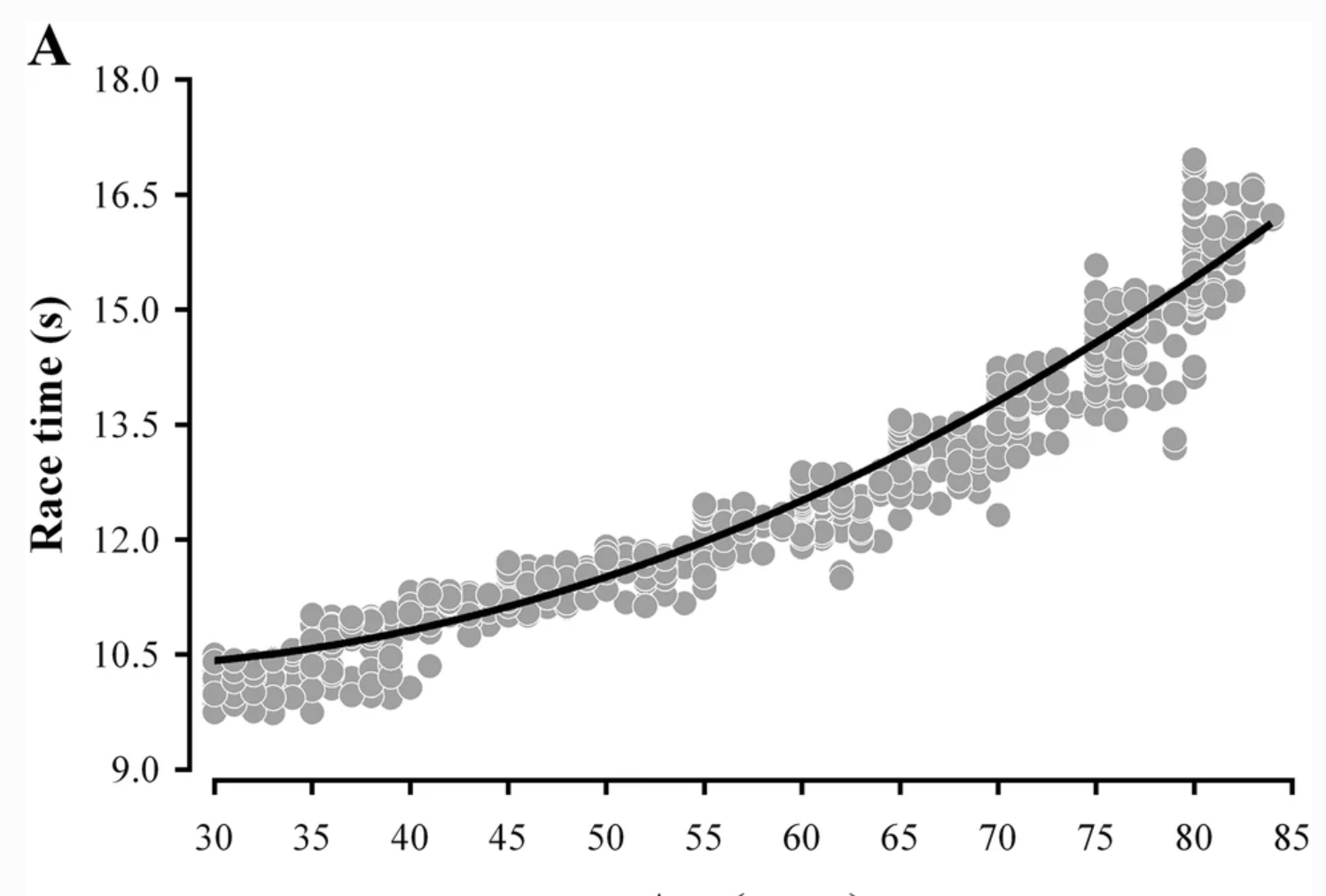Age-related decrease in performance of male masters athletes in sprint, sprint–endurance, and endurance events
Samuel da Silva Aguiar, Sport Sciences for Health volume 16, pages385–392(2020)
Purpose
To investigate the slope of age-related performance decrease of male master athletes competing the 100 m, 400 m, and 10,000 m running events.
Methods
Sample was composed by official data from World Masters Rankings for years 2013–2016. Age and performance data were collected from 2937 athletes between 30 and 105 years. Performance was plotted against age and calculated a trendline for polynomial regression for each event using three different data dispositions: Top-20—best 20 athletes of each age group, all years of analysis; Top-3—best three athletes of each age group, all years of analysis; and annual Top-3—best three athletes of each age group, each year analyzed separately. The age-related point of substantial performance decline was determined by two mathematical methods, Dmax, and log–log.
Results
The annual-Top-3 (age group Top-3 athletes in each year) disposition indicated an early performance decline in 10,000 m in comparison with the 100 and 400 m for both methods (p < 0.05). Top-3 (Top-3 athletes of each age group) analysis also indicated an earlier performance decline in 10,000 m (Dmax: 61.2 years/log–log: 67.6 years), followed by 400 m (72.9 years/77.5 years) and 100 m (76.7 years/78.2 years).
Conclusion
In conclusion, the critical age after which the aging-related decline in masters athletes’ performance is accelerated, and occurs earlier in endurance runners than sprinters.















